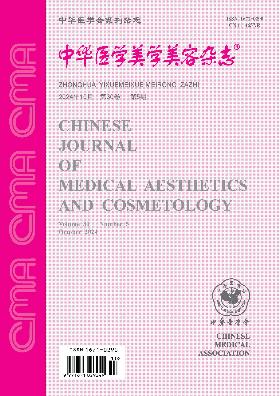Application of 3D reconstruction and simulation in rhinoplasty
引用次数: 0
Abstract
Objective To provide useful reference for the pre-operative design and operation by 3D reconstruction and simulation techniques in rhinoplasty. Methods From October 2016 to March 2017, the laser scanning and 3D reconstruction were performed on 25 patients before operations. The facial morphology and the simulated effect were ontained. All patients were female and they were 18 to 39 years old. The average age was 26 years old. The outline and form were normal. We discussed with patients to confirm the ideal nasal 3D simulated effect. In the process of operation, we were guided by the data of soft measures and 3D printing model. Results Among 25 patients who werefollowed up postoperatively. We got intuitive, accurate 3D reconstruction graphs and simulated surgery procedures in all cases. Being applied to actual surgery procedure, 23 patients were satisfactory with postoperational results. Two patient's nasal tip dropped. We were satisfied with the results after repair. Conclusions 3D reconstruction and simulation techniques improve surgical precision and operation planning selection, which is a good aided method in rhinoplasty. Key words: Rhinoplasty; Printing, three-dimensional; Computer simulation; 3D printing technology; Laser scanning三维重建与仿真在鼻整形术中的应用
目的利用三维重建和仿真技术为鼻整形术前设计和手术提供参考。方法自2016年10月至2017年3月,对25例患者进行术前激光扫描和三维重建。对其面部形态及模拟效果进行了观察。所有患者均为女性,年龄在18-39岁之间。平均年龄26岁。外形正常。我们与患者进行了讨论,以确认理想的鼻腔3D模拟效果。在操作过程中,我们以软测量数据和3D打印模型为指导。结果术后随访25例。我们得到了直观、准确的三维重建图和所有病例的模拟手术程序。应用于实际手术中,23例患者术后效果满意。两个病人的鼻尖掉了下来。我们对维修后的结果感到满意。结论三维重建和仿真技术提高了手术精度和手术方案的选择,是一种很好的鼻整形辅助方法。关键词:鼻整形术;打印,三维;计算机模拟;3D打印技术;激光扫描
本文章由计算机程序翻译,如有差异,请以英文原文为准。
求助全文
约1分钟内获得全文
求助全文
来源期刊
自引率
0.00%
发文量
4641
期刊介绍:
"Chinese Journal of Medical Aesthetics and Cosmetology" is a high-end academic journal focusing on the basic theoretical research and clinical application of medical aesthetics and cosmetology. In March 2002, it was included in the statistical source journals of Chinese scientific and technological papers of the Ministry of Science and Technology, and has been included in the full-text retrieval system of "China Journal Network", "Chinese Academic Journals (CD-ROM Edition)" and "China Academic Journals Comprehensive Evaluation Database". Publishes research and applications in cosmetic surgery, cosmetic dermatology, cosmetic dentistry, cosmetic internal medicine, physical cosmetology, drug cosmetology, traditional Chinese medicine cosmetology and beauty care. Columns include: clinical treatises, experimental research, medical aesthetics, experience summaries, case reports, technological innovations, reviews, lectures, etc.

 求助内容:
求助内容: 应助结果提醒方式:
应助结果提醒方式:


